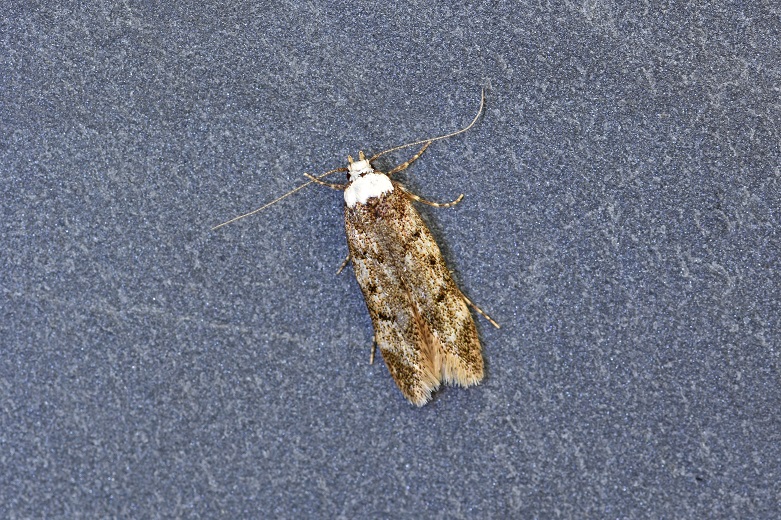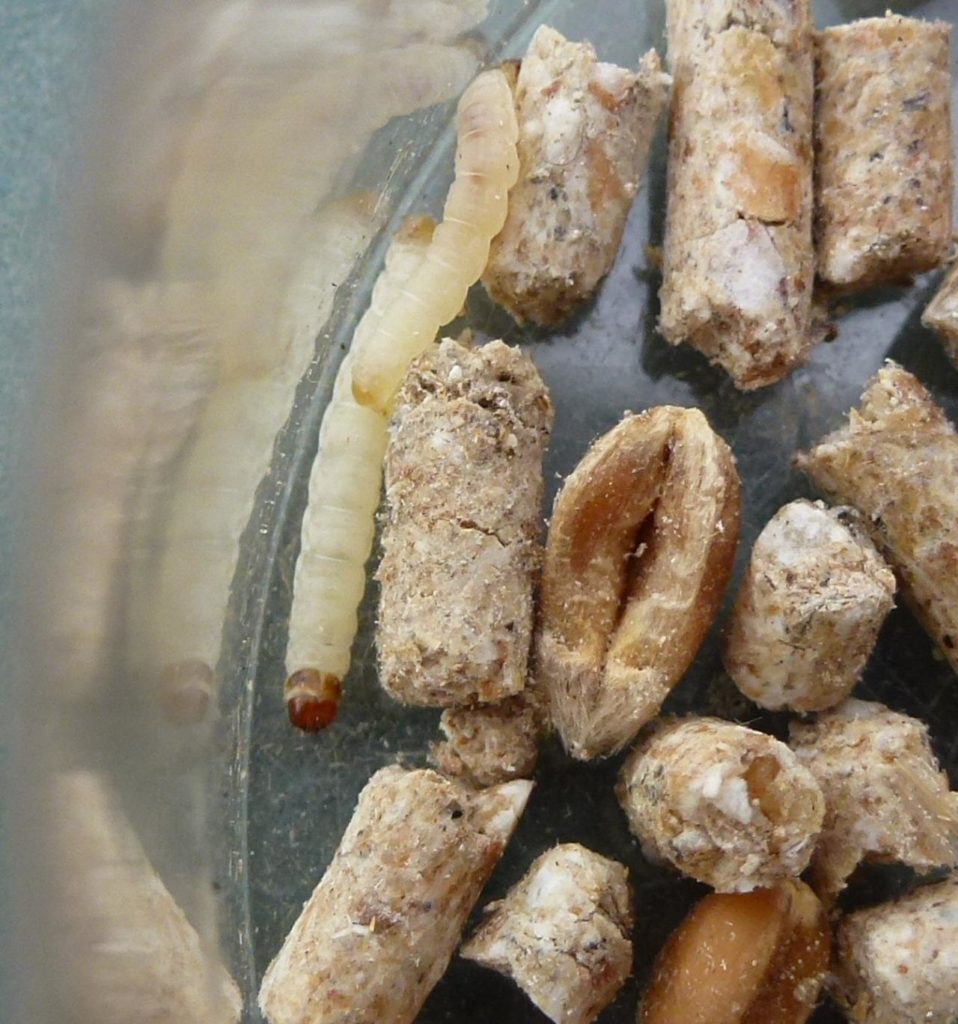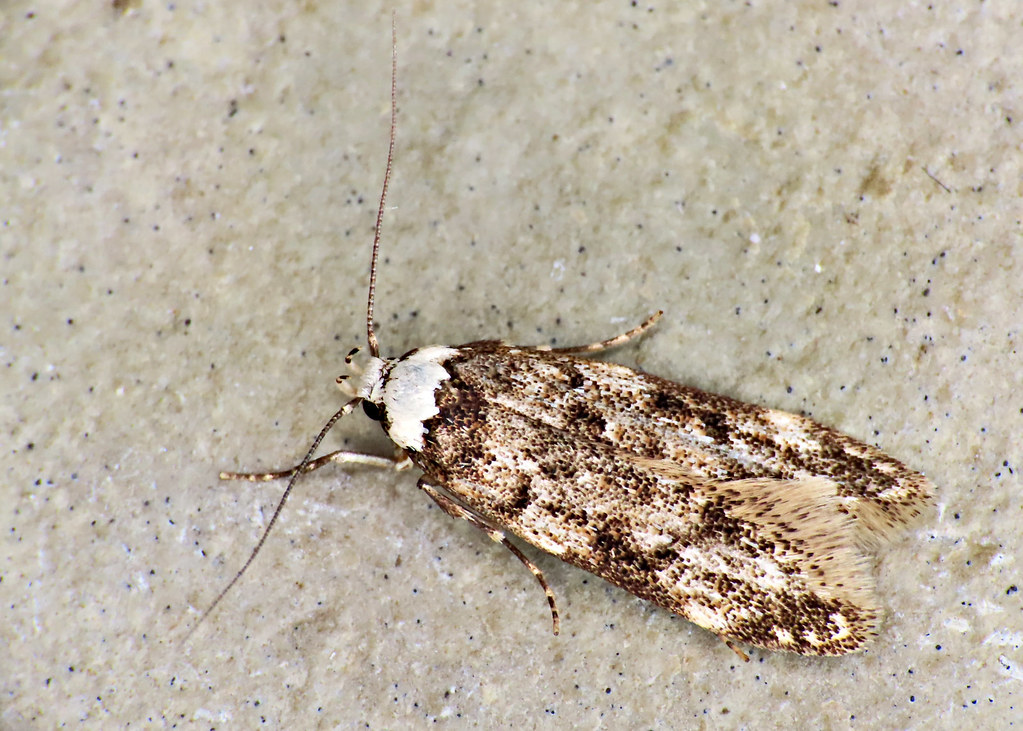White-shouldered House Moth (Endrosis sarcitrella)
The White-shouldered house moth of the concealer moths family gets its name after the prominent white patches on its prothorax and shoulder. They have a diverse distribution occurring worldwide, mainly infesting food items, wool, rotting wood, etc. Similar to the brown house moth, it also belongs to the Oecophorinae subfamily.
birdguides-cdn.com
Scientific Classification
- Family: Oecophoridae
- Genus: Endrosis
- Scientific Name: Endrosis sarcitrella
Description and Identification
Caterpillar
The larvae have a grub-like appearance, 12 mm long, with a white body and brown head. They live on dried plant and animal debris, forming a tunnel of silk to travel within the food source to feed at night. There are records of the larvae eating cereal, dried fruit, seed, and potato, besides wool and old textiles.
Pupa
The pupae are light brown, remaining within a silken cocoon.
Adult Moth
Sexual Dimorphism: Present
The females,10.5 mm long, are larger than the males measuring 6.3 mm.
Color and Appearance: When the wings are opened, they are grayish-white, with the forewings having dark patches. When closed, the pattern remains the same.
They have a prominent white pattern on their shoulder, head, and thorax. Besides, these moths have an overall golden brown body, with dark brown flicks and hair fringes near the wingtips.
Average wingspan: 15-20 mm
Flight pattern: Consistent
Season: Year-round.
Egg
Females lay about 200 eggs close to a food source that hatch in 1-4 weeks. They need high humidity (80 %) to hatch finally.
Quick Facts
| Distribution | Worldwide |
| Habitat | Indoors |
| Predators | Mites, spiders, birds |
| Lifespan of Adults | 3 weeks |
| Diet | Larva: Dried fruits, grains, potatoes, cereals, wool, old textiles, rotten wood Adult: Can take liquid but does not feed |
Scientific Classification
- Family: Oecophoridae
- Genus: Endrosis
- Scientific Name: Endrosis sarcitrella





